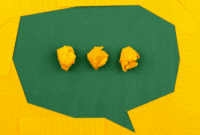The way we communicate with our children matters. And the language we use matters. Healthy communication builds healthy, connected relationships. When we communicate with empathy and compassion; when we listen to our children; when we come from a place of support and understanding; we have the opportunity to develop deeper, stronger relationships with our kids.
However, many of us get stuck in unhelpful patterns of communication with our children. We find ourselves locked in power struggles, making endless threats and demands, yelling and nagging, or repeating ourselves over and over again. And somehow, still feeling like our message hasn’t been heard. It all takes its toll.
But if we can change the way we communicate with our children, we can change our relationship with them.
So here are the five biggest communication mistakes parents make with their kids. Mistakes that are often unconscious, but that damage your relationship with your children and create disconnection instead of connection.
5 communication mistakes that create disconnection with our kids:
1. Judgment
Judgment occurs when you make assumptions about what your child’s behaviour means. You assign value to the behaviour, and you evaluate the behaviour, usually as either good or bad.
Here’s what it sounds like:
- “Why are you being so silly?”
- “You’re being so naughty today!”
- “That outfit looks ridiculous!”
- “Stop acting like such a baby!”
The problem with judgment, is that the meaning you assign to the behaviour is based on your own interpretation of the situation. It’s subjective. It’s just your opinion. And it’s unlikely that your child is going to agree. In fact, your child will more than likely feel criticised by your comments. And of course, when we feel criticised, we tend to become defensive. We may even dig our heels in further. So now you’ve opened the door to an argument and a potential power struggle. And you’ve certainly created disconnection between you and your child.
What to do instead:
Stick to the observable facts. When you simply state the facts as you see them, there is no room for challenging or arguing. Facts are not opinion. They are not debatable. It sounds like this: “It’s 8am and you’re in your pyjamas. We need to leave the house in 15 minutes.”
2. Blame
Blame is about shifting and denying responsibility. Not taking ownership. And when it comes to communicating with kids, the biggest thing I hear parents doing, is making their children responsible for managing their emotional state. But so many parents are not aware that they’re doing this.
Here’s what it sounds like:
- “You’re making me so angry!”
- “If you just listened the first time I wouldn’t have to yell!”
- “I’m so tired of this behaviour from you!”
Now often what I hear from parents, is that when they use this language, they are trying to help their children understand the impact of their actions on others. They believe that by pointing out how their behaviour makes them, or others feel, they are teaching children empathy. But this is not an effective way of teaching empathy. Because when we shift into blaming language, children do not feel more empathetic towards others. They simply feel bad about themselves. They feel guilty. And guilt does not lead to empathy. In fact, guilt often leads to shame, which is really the opposite of empathy. We cannot think of others when we feel shame. We can only think of how bad we FEEL, and eventually, how bad we ARE.
What to do instead:
Take responsibility for managing your own emotions. That might sound like this: “I’m feeling frustrated right now. I’m going to take 3 deep breaths to calm my body down.” Then, help your child feel heard and validated themselves. “You sound like you’re feeling angry right now and I see that you’re having trouble controlling your body. Let’s find a way to help you calm your body.” Instead of blame, you are offering understanding and support, which means you are much more likely to find a solution to the problem.
3. Guilt
When we use guilt to communicate, we make others feel bad about what they’ve done. It involves us pointing out where our children have gone wrong and how they have caused a problem or difficulty for someone else. Some of us also use guilt to manipulate others into doing things for us, without ever making a direct request. A lot of the time this is unconscious, and comes from our own childhoods. And again, this is a strategy that many parents believe will help their child reflect on what they’ve done, and make amends.
Here’s what it sounds like:
- “Look what you’ve done now!”
- “We’re having a good time, don’t ruin this for everyone!”
- “I’ve worked hard all day long, all I ask is that you clean your room!”
- “You’re supposed to be setting an example for your little sister!”
But once again, the problem with guilt is that it causes children to feel bad about themselves. When they feel bad about themselves, they are unable to reflect on their behaviour. Considering the impact of our actions on others is a higher order thinking skill. It takes time to develop. And it requires us to feel heard and validated first. When we are experiencing big emotions, and feeling bad about ourselves and what we’ve done, we are unable to access higher order thinking skills. We cannot reflect on the impact of our actions. And we certainly can’t make amends.
What to do instead:
We often resort to guilt as a communication strategy when our own needs are unmet. When we’re tired, or stressed, or overwhelmed. When it feels like no one is considering us. But it is not the job of our children to meet those needs. So think about how you can take responsibility for meeting your own needs, rather than expecting your children to do it for you. Then, when your needs are met, you can look at the unmet needs underlying your child’s behaviour too. Get curious with your kids. What is getting in the way of them doing well? What do they need from you to be successful?
4. Shame
While guilt is feeling bad about what you’ve done, shame is feeling bad about who you are. When we communicate using shame, our kids hear, “I am bad”. We often slide into shame based communication when we are trying to set limits with our children. And usually, when shame based language enters the conversation, it’s because we ourselves are feeling dysregulated. We might be feeling frustrated, or disappointed, or angry, or even scared. We feel out of control. And so we attempt to exert some control.
Here’s what it sounds like:
- “Why would you do that?!”
- “What’s wrong with you?”
- “You should know better.”
- “You’re a big boy/girl. Big boys/girls don’t behave like this!”
The problem with shame is that it creates shut down and complete disconnect. Children who feel shame will withdraw into themselves. They might become unresponsive. Avoid eye contact. Refuse to talk. And avoid making amends. Because they feel too bad about themselves to face anyone or anything. When we consistently shame children to get them to do what we want, we teach them that they are not as important as us. That our agenda is more important than they are. It can lead to children who feel worthless, unimportant and unloved.
What to do instead:
Sometimes we do need to set limits and make demands of our children. But we can do it kindly, and with empathy. First acknowledge how your child feels, and why it might be difficult to comply with your request. Connect with your child. It might sound like this, “I know it’s hard to leave the park when you’re having so much fun. It’s lunch time now, so we’re going home to eat.” When your child feels heard and understood, they will be much more open to your influence and more willing to accept the limit you’ve set. Because they’ll feel connected to you.
5. Fear
And finally, there’s fear. Many of us were raised with fear based parenting. And it’s important to remember that fear can be communicated both verbally and non verbally. It sounds like threats, demands, yelling, and punishments. But it also looks like raised fists, a scowl or a grimace, standing over a child, using a harsh tone. Even rapid movements or a loud sigh. It also looks like isolating a struggling child. Sending them to their room when they are distressed. Withdrawing love or affection. The silent treatment. Time outs.
Here’s what it sounds like:
- “Stop crying or I’ll give you something to cry about”
- “If you leave those toys on the floor I’ll throw them all away!”
- “Go to your room, I don’t want to see you until you’ve calmed down!”
The problem with fear, is that children cannot learn when they are afraid. In order to do well, children need to feel safe. When children feel unsafe, the rational, thinking part of their brain – the area responsible for learning – shuts down. So when we punish, yell, threaten, make demands, or isolate children, they do not learn what to do next time. They do not develop the necessary self regulation skills they need to be successful in the future.
What to do instead:
Create safety through connection. Take a few deep breaths, and focus on sending cues of safety to your child. With your voice, with your body and with your words. It might include a cuddle, some reassuring words, a song or a massage. It might even look like relaxing your face, lowering your hands, or sitting down on the floor so you no longer look threatening. Once your child feels safe and you are feeling calm, you can work together to solve the problem.
Of course, there are no magic tricks here. No phrases you can use that will make your child immediately listen, do as you ask, or behave exactly the way you would like them to. But I hope you can see the value in using language that connects, rather than creates distance. That opens up communication instead of shutting it down. Language that helps your child feel good about themselves. And language that helps you create the relationship you really want with your child.
Sarah is a psychologist, mama of 4 and the creator of Mindful Little Minds. She has over 10 years of experience working with children, adolescents and families experiencing mental health problems and has a special interest in anxiety disorders in children. In her spare time she enjoys hugging her kids, drinking coffee, and telling anyone who’ll listen how tired she is.
!function(f,b,e,v,n,t,s)
{if(f.fbq)return;n=f.fbq=function(){n.callMethod?
n.callMethod.apply(n,arguments):n.queue.push(arguments)};
if(!f._fbq)f._fbq=n;n.push=n;n.loaded=!0;n.version=’2.0′;
n.queue=[];t=b.createElement(e);t.async=!0;
t.src=v;s=b.getElementsByTagName(e)[0];
s.parentNode.insertBefore(t,s)}(window, document,’script’,
‘https://connect.facebook.net/en_US/fbevents.js’);
fbq(‘init’, ‘454220848384872’);
fbq(‘track’, ‘PageView’);
!function(f,b,e,v,n,t,s){if(f.fbq)return;n=f.fbq=function(){n.callMethod?
n.callMethod.apply(n,arguments):n.queue.push(arguments)};if(!f._fbq)f._fbq=n;
n.push=n;n.loaded=!0;n.version=’2.0′;n.queue=[];t=b.createElement(e);t.async=!0;
t.src=v;s=b.getElementsByTagName(e)[0];s.parentNode.insertBefore(t,s)}(window,
document,’script’,’https://connect.facebook.net/en_US/fbevents.js’);
!function(f,b,e,v,n,t,s){if(f.fbq)return;n=f.fbq=function(){n.callMethod?
n.callMethod.apply(n,arguments):n.queue.push(arguments)};if(!f._fbq)f._fbq=n;
n.push=n;n.loaded=!0;n.version=’2.0′;n.queue=[];t=b.createElement(e);t.async=!0;
t.src=v;s=b.getElementsByTagName(e)[0];s.parentNode.insertBefore(t,s)}(window,
document,’script’,’https://connect.facebook.net/en_US/fbevents.js’);



